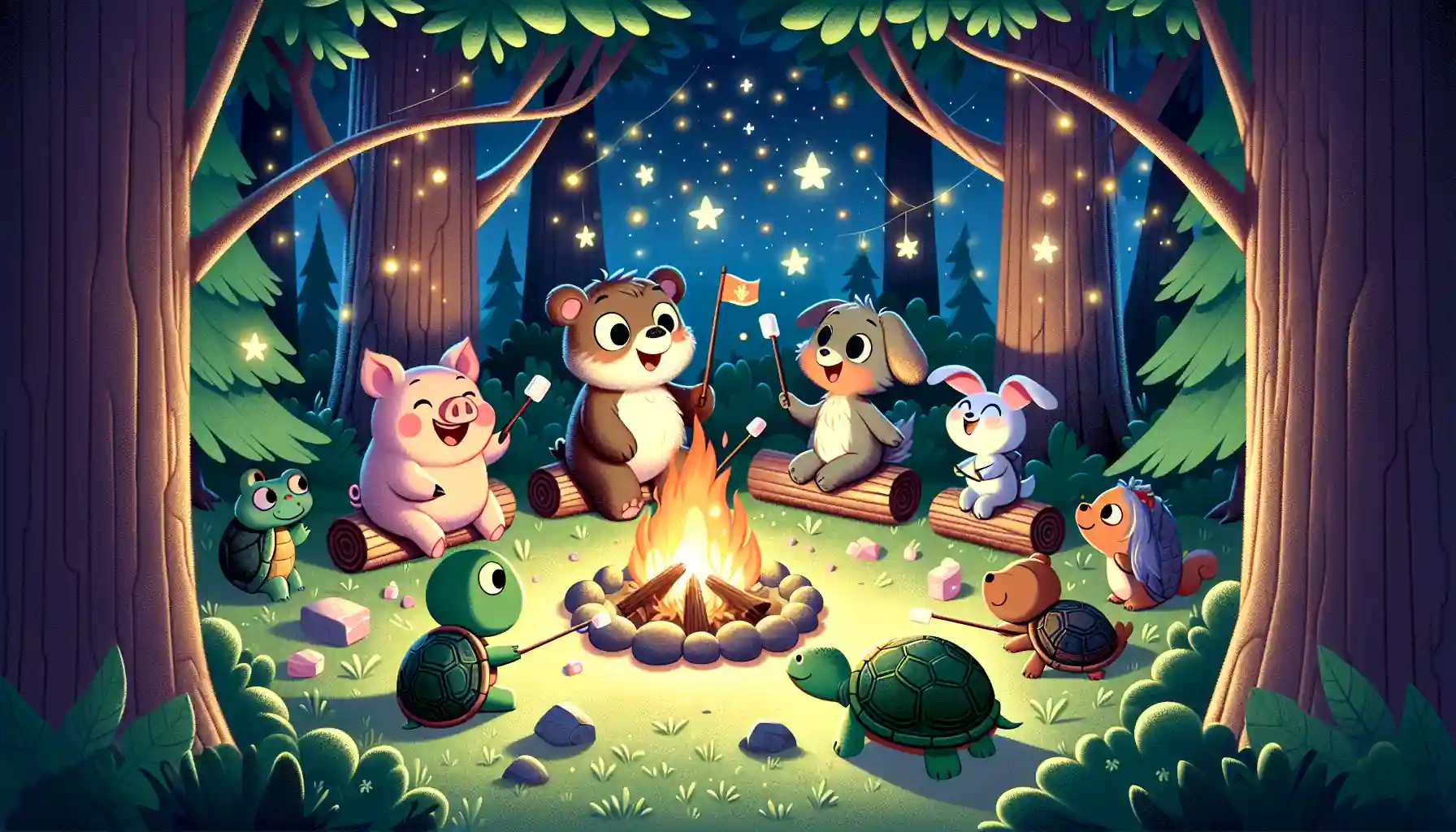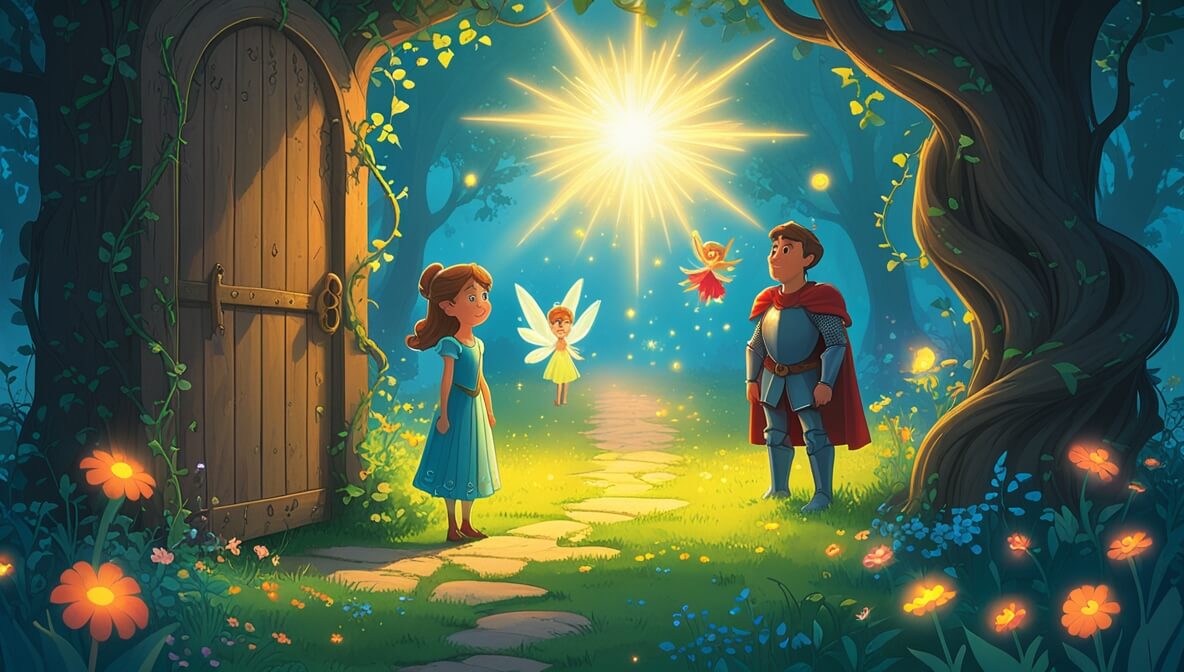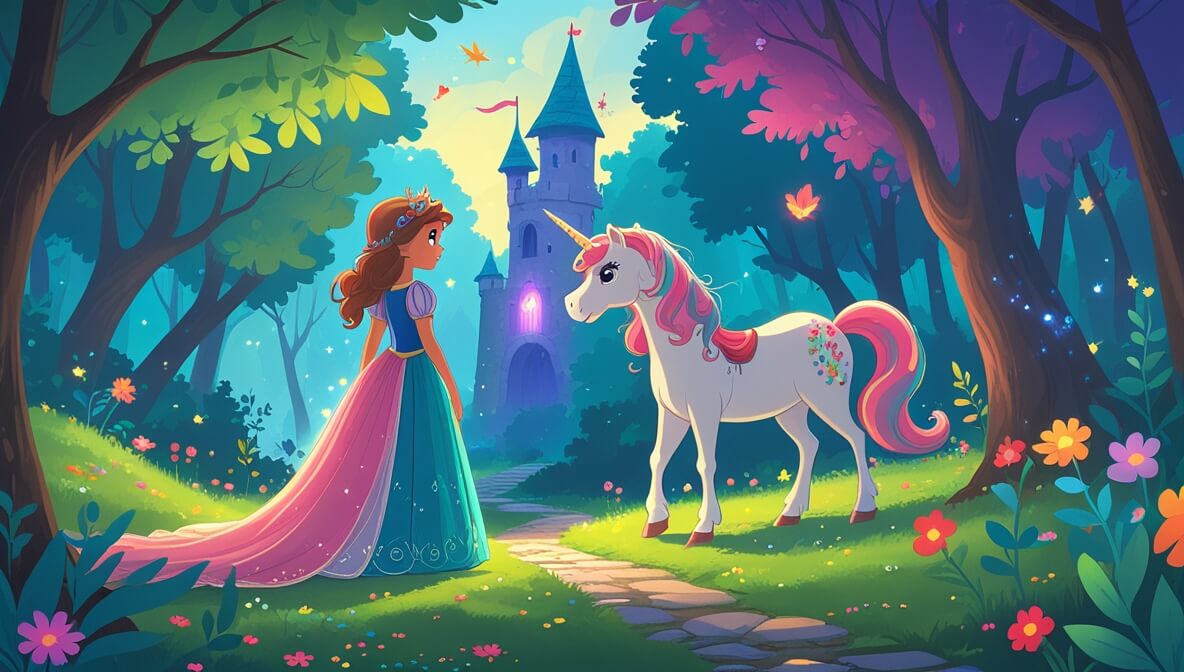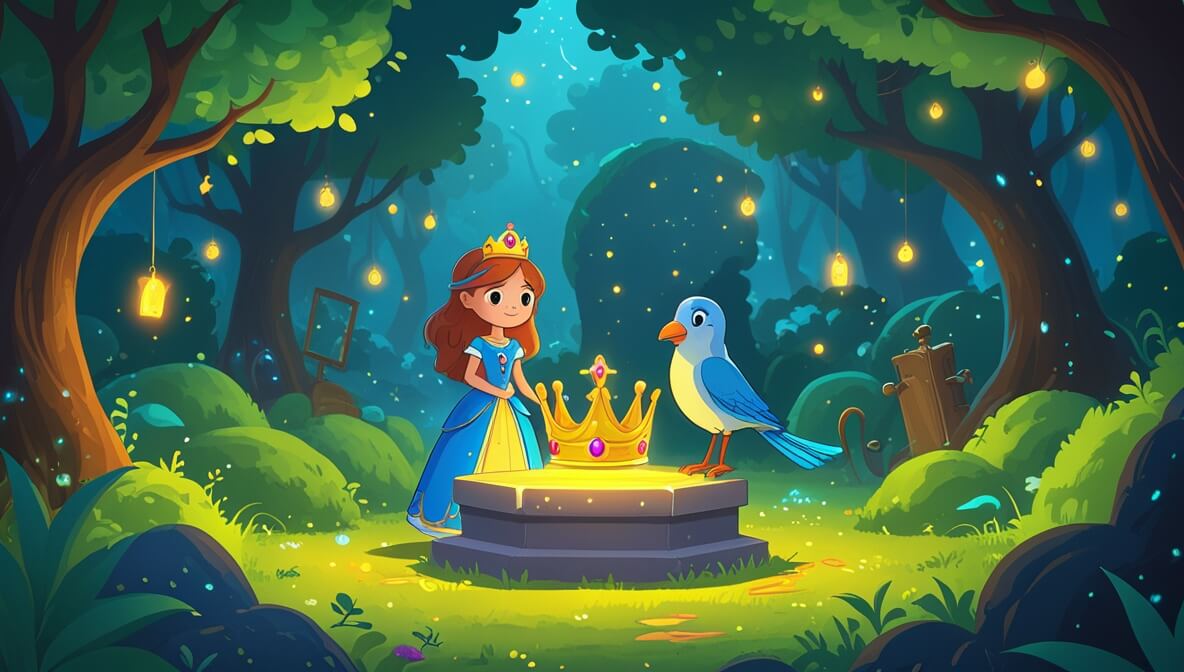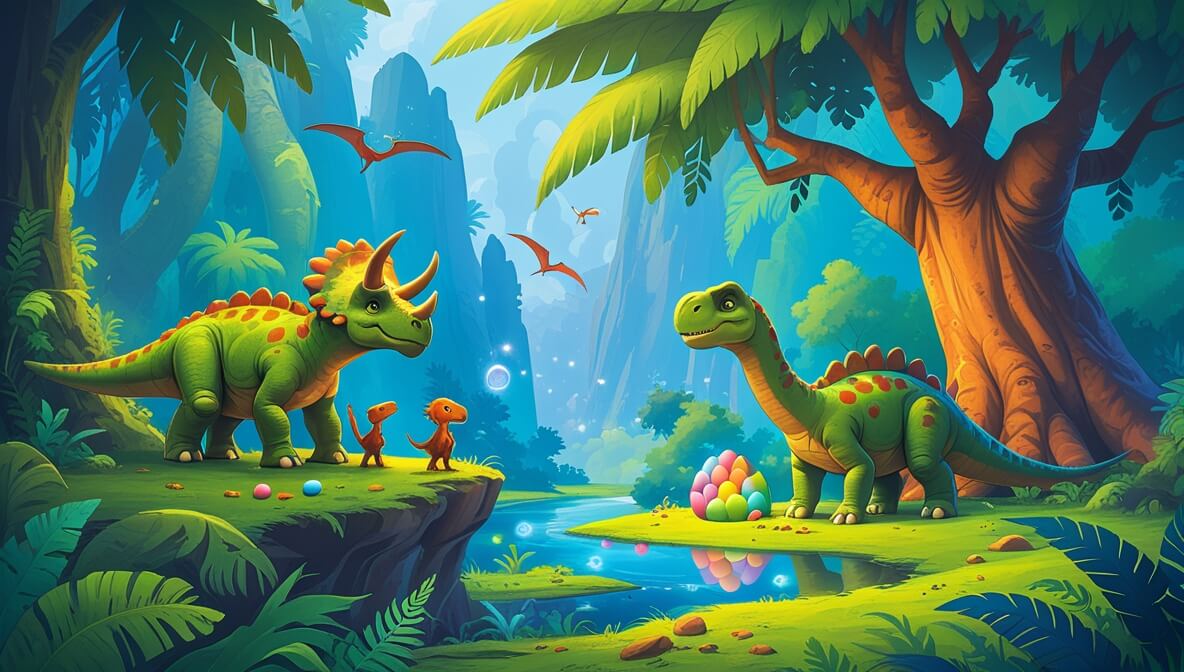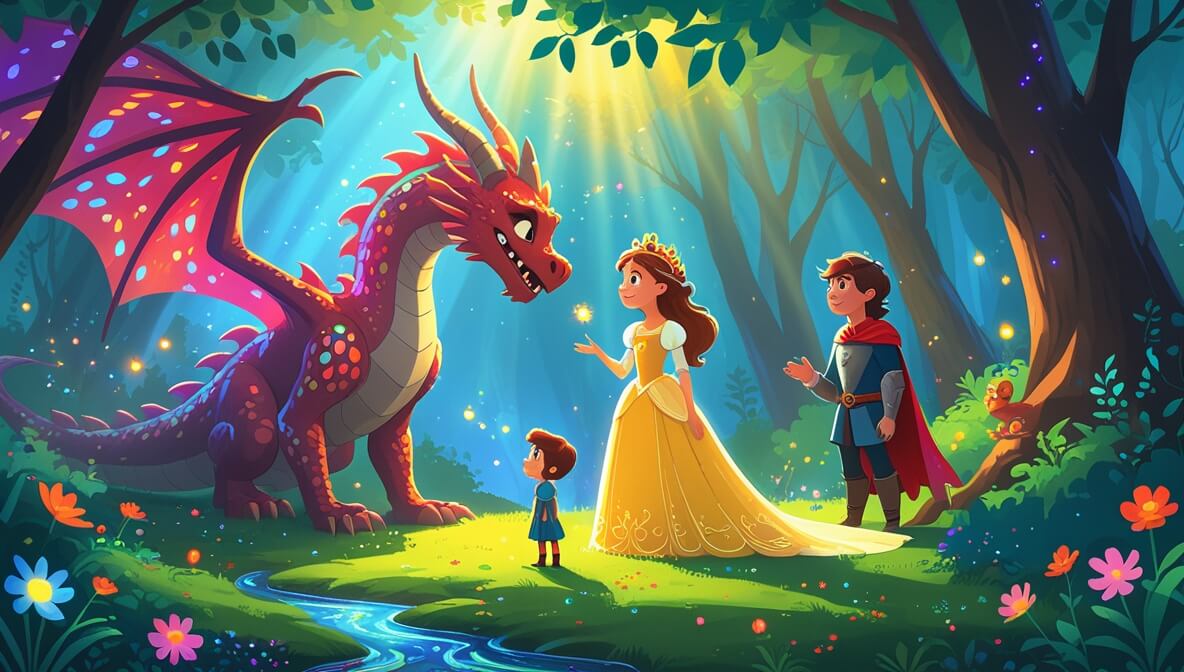A group of animals organizes a fun sports day in the forest. Each animal uses their unique skills to win, but teamwork steals the show!
Age Recommendation
3 - 12 years
Characters of The Great Animal Sports Day
Characters:
- Penny the Pig (a playful and clever pig)
- Timmy the Turtle (a slow but steady competitor)
- Duke the Dog (an energetic and loyal friend)
- Sally the Squirrel (a quick and nimble climber)
- Barry the Bear (a strong but gentle giant)
Story of The Great Animal Sports Day
The Forest Gets Ready
Deep in the heart of the forest, the animals were buzzing with excitement. It was the day of the **Great Animal Sports Day**, an event where all the forest friends came together to have fun and compete in different games. Penny the Pig was in charge of organizing everything. She trotted around with a clipboard, making sure all the games were ready.
“Okay, everyone!” Penny called out. “We have a race, a tree-climbing contest, and a tug-of-war. Let’s have fun and do our best!”
The Race Begins
The first event was the race. Duke the Dog wagged his tail excitedly. “I’m going to win this one for sure!” he barked. Timmy the Turtle smiled slowly. “We’ll see about that,” he said in his calm voice.
When the race began, Duke sprinted ahead, his paws kicking up dust. But halfway through, he got distracted by a butterfly and stopped to chase it. Meanwhile, Timmy the Turtle kept moving, step by step, never stopping. To everyone’s surprise, **Timmy crossed the finish line first**!
The Tree-Climbing Contest
Next was the tree-climbing contest. Sally the Squirrel leapt up the tree like a flash of lightning. “Catch me if you can!” she chirped. Penny the Pig tried her best but couldn’t get very far. Barry the Bear climbed slowly but surely, his big paws gripping the tree trunk.
In the end, Sally reached the top first and waved down at her friends. “I told you I was quick!” she giggled. Everyone clapped for her.
The Tug-of-War Teamwork
The final event was the tug-of-war. On one side, it was Duke, Sally, and Penny. On the other side, it was Barry and Timmy. “We’re stronger!” Barry roared, gripping the rope tightly. But Penny had a plan.
“Let’s pull together!” she whispered to her team. They all pulled at the same time with all their might. Barry and Timmy struggled, but teamwork won the day. Duke, Sally, and Penny fell backward with the rope in their hands, laughing.
Celebration Time
After the games, the animals gathered around a big picnic blanket. They shared fruits, nuts, and sandwiches. “This was the best day ever!” Penny said, smiling at her friends. **Each animal had used their special skills**, but they all agreed that working together was the most fun of all.
The end.
Moral of the Story
Everyone has unique strengths, but teamwork and friendship make every challenge more fun and rewarding. Just like the animals, we can achieve great things when we work together.
Questions to Think About
- Why did Timmy the Turtle win the race even though he was slow?
- What made Sally the Squirrel so good at climbing trees?
- How did teamwork help Penny’s team win the tug-of-war?
- What is something you’re good at, and how can you use it to help others?
Do You Know
- Turtles are known for their patience and determination, which is why they often win in stories!
- Squirrels can jump up to 10 times their body length, making them amazing climbers.
- Dogs are loyal and playful, often helping their friends in real life too!
Word Explorer
- Teamwork: Working together with others to achieve a goal.
- Determination: Not giving up, even when something is hard.
- Nimble: Quick and light in movement.
Emotions in the Story
- Excitement: When the animals prepared for the sports day.
- Surprise: When Timmy the Turtle won the race.
- Joy: When the animals celebrated together at the picnic.
Color Your Scene
Imagine the animals at the starting line of the race. Timmy the Turtle is calm, Duke the Dog is wagging his tail, and Penny the Pig is cheering. What colors would you use for their surroundings? Draw the forest scene with the animals having fun and competing in the games!
Parents' Corner
Discuss with your child how each animal brought something special to the sports day. Ask them about their own strengths and how they can use them to work with friends or family. Encourage them to think about times when teamwork helped them achieve something they couldn’t do alone.
Teachers' Corner
This story is a great way to teach children about teamwork, patience, and celebrating individual strengths. Use it as a starting point for group activities where children can work together, such as building something or playing cooperative games. Discuss how every child has unique talents that can contribute to the team’s success.
- 10 Minute Bedtime Stories
- 15 Minute Bedtime Stories
- 2 minute bedtime stories
- 20 Minute Bedtime Stories
- 3 Minute Bedtime Stories
- 5 Minute Bedtime Stories
- Adventure stories
- Animal stories
- Baby stories
- Bedtime Stories About Friendship
- Bedtime Stories For 10 Year Olds
- Bedtime Stories For 2 Year Olds
- Bedtime Stories For 3 Year Olds
- Bedtime Stories For 4 Year Olds
- Bedtime Stories For 5 Year Olds
- Bedtime Stories For 6 Year Olds
- Bedtime Stories For 7 Year Olds
- Bedtime Stories For 8 Year Olds
- Bedtime Stories For 9 Year Olds
- Bedtime stories for boys
- Bedtime stories for girlfriend
- Bedtime stories for girls
- Bedtime Stories For Preschoolers
- Bedtime Stories For Toddlers
- Bedtime stories with cats
- Bedtime Stories with dogs
- Bedtime stories with pets
- Best bedtime stories
- Campfire stories for kids
- Childhood stories
- Children's funny & humorous short stories
- Children's stories about feelings
- Children's Stories About Grandparents
- Children's Stories With Bears
- Children's Stories With Birds
- Children's Stories With Bunnies
- Children's Stories With Grandmas
- Children's Stories With Lions
- Dialogue Stories
- Dinosaur Bedtime Stories
- Entertaining Short Stories
- Fairy Tales
- Famous Fairy Tales
- Famous Short Stories
- Ghost stories for children
- Good bedtime stories
- Long Bedtime Stories
- Long Bedtime Stories for Girlfriend
- Love Bedtime Stories
- Magic stories
- Moral stories
- Motivational Stories For Kids
- Pirate stories
- Popular bedtime stories
- Princess Bedtime Stories
- Quick Bedtime Stories
- Romantic bedtime stories
- Scary Ghost Stories
- Scary stories for kids
- Short Bedtime Stories
- Short Bedtime Stories for Adults
- Short Bedtime Stories for Kindergarteners
- Short Stories For 1st Graders
- Short Stories For 2nd Graders
- Short Stories For 3rd Graders
- Short Stories For 4th Graders
- Short stories for 5th graders
- Short Stories For 6th Graders
- Short Stories For 7th Graders
- Short Stories For Elementary Students
- Short stories for kids
- Short stories for Middle School Students
- Short stories with heroes
- Short stories with moral lessons
- Spooky stories
- Stories about being in danger
- Stories About Courage And Bravery For Kids
- Stories about forgiveness
- Stories about kindness
- Stories That Rhyme
- Stories With Castles And Kingdoms
- Stories with dragons
- Stories With Monsters, Beasts And Wild Creatures
- Uncategorized
- Unicorn stories
- Very Short Stories For Kids
- Witch Stories

